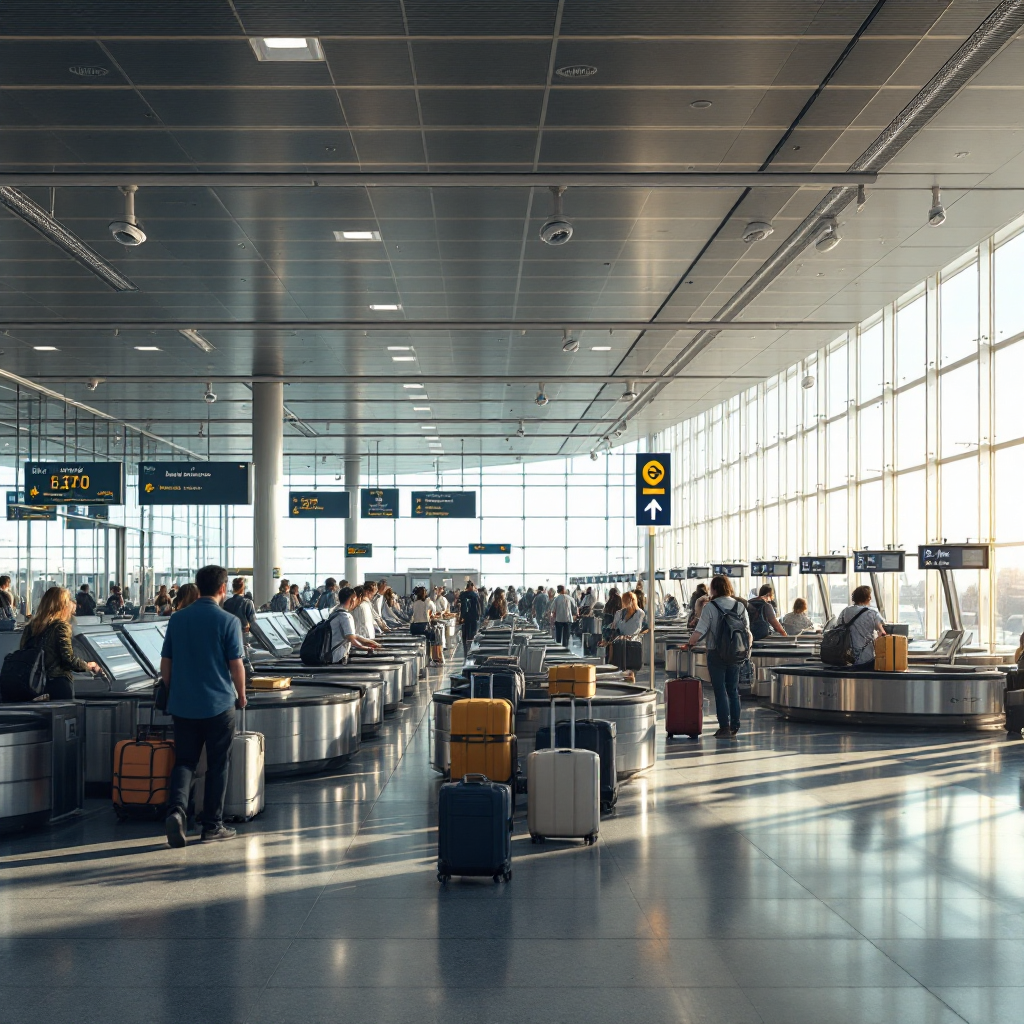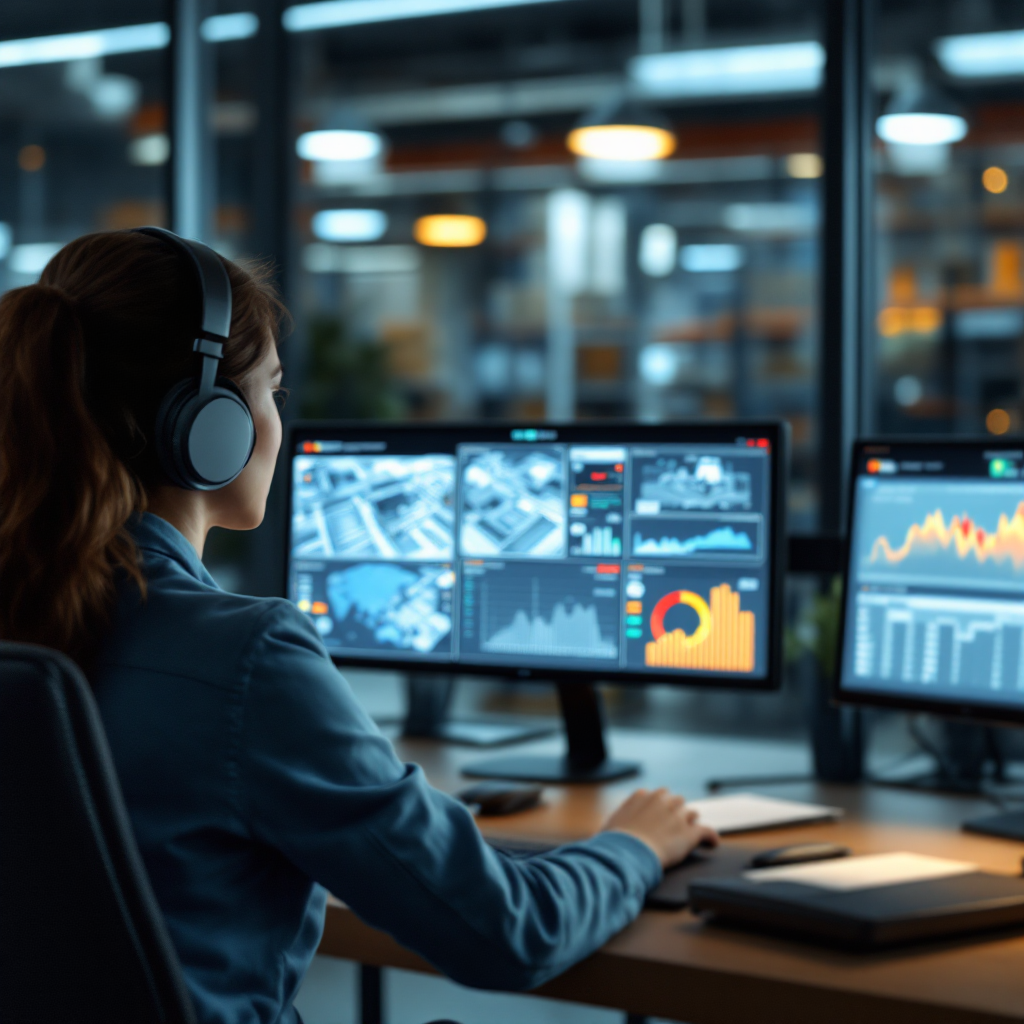Airport Baggage Halls: The Role of Real-time Analytics
First, airport baggage halls face steady pressure during peaks. Congestion grows fast. Crowds cluster near carousels. These clusters raise safety risks and slow down reclaim. Airports must manage both people and the flow of luggage. Also, operators must reduce dwell and keep operations smooth. Sensors, cameras, and current systems can help. Real-time data sources include CCTV analytics, LiDAR, and sensors that count people. These data points feed live displays and dashboards. For example, London Heathrow reported a measurable improvement, with a reduction in wait times by up to 15% after putting dynamic flow rules in place reduction in wait times by up to 15%. In practice, staff see occupancy, predicted peaks, and alert zones on a single screen. This enables faster decisions. Therefore staff can move to carousels that need support. As a result, the terminal uses capacity more efficiently.
Next, a mix of sensors offers coverage. LiDAR gives density maps and tracks movement paths. CCTV with on-prem AI turns cameras into operational sensors. Visionplatform.ai converts existing VMS streams into events. These events feed operations, alerts, and dashboards. In addition, edge processing keeps data inside the airport environment for GDPR and EU AI Act readiness. This reduces vendor lock-in and lowers risk. Meanwhile, automated dashboards let control rooms see occupancy by zone. They also let teams spot spikes that might create queues at check-in or security checkpoints.
Furthermore, real-time updates improve emergency response. Managers see crowding and can close or open gates. They can redirect passengers to different carousels. Also, airports can prioritise baggage delivery paths to reduce dwell. In larger international airport settings, this adaptive approach improves terminal capacity utilisation. It also helps to maintain a smooth passenger experience. For further reading on practical airport video analytics, see AI video analytics for airports from Visionplatform.ai AI video analytics for airports.
Automation and Artificial Intelligence (AI) in Baggage Handling
Artificial intelligence and automation now guide many baggage handling decisions. Machine learning models predict arrival rates and assign carousels. These models also balance worker assignments and conveyor loads. First, data flows from check-in, sorters, and sensors. Then, predictive models rank which carousel should receive which load. The approach reduces time to delivery. It also reduces cross-traffic on the reclaim hall floor. Airports link AI to legacy baggage handling systems to boost throughput. Integration often uses APIs, message buses, or system-based adapters. As a result, older conveyor logic can receive optimisation signals without full replacement.
Additionally, the airport baggage handling market shows strong investment. The industry was valued at USD 2.46 billion in 2025 and may grow to USD 3.95 billion by 2030 market valued at USD 2.46 billion in 2025. Therefore many airports allocate funds for new scanners and sorting automation. However, new tech raises cyber and interoperability questions. Airports must secure interfaces and harden OT systems. They must also ensure that AI models behave predictably. For this reason, on-prem processing and auditable logs often appear in procurement requirements.
Next, automation improves operational efficiency and reduces mishandled bags. Predictive routing can assign baggage to fewer transfer points. This in turn lowers the number of bags that miss connections. In practice, AI optimises conveyor sequencing and reduces unnecessary sorting cycles. Airports can thus support airlines and ground handlers with faster delivery. For integration reference, see Milestone XProtect integration for airport CCTV to see how camera feeds join operational systems Milestone XProtect integration for airport CCTV.

AI vision within minutes?
With our no-code platform you can just focus on your data, we’ll do the rest
Robotics and Baggage Tags: Precision in Luggage Tracking
RFID-based baggage tags transform tracking. Tags give near real-time visibility for each item of luggage. Airports increase traceability and reduce lost items. RFID lowers manual searches and speeds up baggage delivery. The technology improves security and supports continuous baggage visibility. Research shows RFID adoption raises accuracy and reduces delays in handling RFID adoption improves baggage tracking. In addition, robotics support reclaim area workflows. Automated guided vehicles (AGVs) and robotic sorters handle repetitive movement tasks. They limit the need for manual handling in tight spaces. This frees staff to serve passengers and to resolve exceptions.
Simulation studies illustrate the combined effect of tags and robotics. Optimised carousel layouts reduce passenger wait times by about 10–20% in many cases optimised carousel layouts reduce wait times. These gains stem from fewer cross-flows, faster delivery, and better sequencing. Thus the claim area becomes easier to manage. Meanwhile, continuous baggage tracking improves security by flagging anomalies. For example, systems can detect when a bag deviates from its scheduled path.
Also, robotics lower physical strain on baggage handlers and improve handling processes. Autonomous sorters are precise and consistent. Robotic baggage loaders can place luggage onto conveyors with less error. Airports can expect a reduction in mishandled bags because the system controls movements tightly. Moreover, airports can combine RFID feeds with camera events. The result is a richer picture of the flow of luggage and people. For airports looking to adopt camera-as-sensor strategies, our platform converts CCTV to operational events and publishes them to BI and OEE dashboards, helping to streamline reclaim operations. For a practical view on automation in public spaces, see our page on airport security queue analytics with cameras airport security queue analytics with cameras.
Resource Allocation for Passenger Experience
Predictive resource allocation improves the passenger experience. Models use flight schedules, check-in rates, and historic patterns. Then they suggest staff rosters, carousel assignments, and trolley availability. These recommendations cut queuing and speed reclaim. Also, simulation techniques help stagger arrivals. By staggering arrivals, airports avoid simultaneous peaks across zones. This reduces bottlenecks at the baggage claim and at adjacent checkpoints. As a consequence, the terminal keeps a smooth flow of people.
Furthermore, accurate forecasts help airports to adjust staffing. Systems can alert supervisors to move teams to busy carousels. They can also suggest opening a second carousel for a late flight. This reduces passenger frustration. In addition, better wayfinding and signage reduce dwell and speed movement. Operational dashboards that combine camera detections, conveyor status, and RFID reads prove especially useful. Visionplatform.ai streams structured events from cameras into dashboards and MQTT streams. This lets managers make fast choices without switching tools.
Dr Brahim has emphasised the need for integrated analytics across departments. He states, “The future of baggage hall management lies in combining real-time data analytics with predictive modeling to create adaptive systems that respond dynamically to passenger flow variations.” Dr Brahim quote. His point highlights the value of cross-team data sharing. When staff, IT, and ground handlers share a single view, airports can enhance operational efficiency and passenger satisfaction. Finally, predictive alerts reduce the number of bags left waiting and help airports and airlines meet connection targets.

AI vision within minutes?
With our no-code platform you can just focus on your data, we’ll do the rest
Case Studies: Passenger-Centric Solutions at Leading Airports
Heathrow offers a clear example of data-sharing success. By sharing data across departments and applying advanced models, Heathrow cut congestion and improved reclaim throughput Heathrow case study. Schiphol, Dubai, and Changi have made similar investments. Each airport tailored systems to local constraints. Schiphol emphasised passenger routing and space usage. Dubai focused on robust automation under high volumes. Changi layered redundancy and passenger comfort features. Across these projects, airports to adjust staffing and use real-time signals to manage peaks.
Quantitatively, the results vary by size and volume. Many airports report throughput gains and fewer mishandled bags after upgrades. For instance, simulation and field trials often show a reduction in mishandled bags and faster reclaim times. Also, operators note better passenger satisfaction scores and smoother connections. Standards from Airports Council International help to benchmark global mishandled bag rate improvements and to set targets. Smaller airports can scale solutions by using edge processing and modular integrations. Larger hubs often invest in robotics, RFID, and advanced scheduling engines.
Best-practice lessons emerge from these case studies. First, start with the existing camera network and VMS. Then add targeted sensors and tags. Next, build simple dashboards for operations and expand functions. Keep processing on-prem where data sovereignty matters. Also, keep models explainable and auditable. Visionplatform.ai’s approach of using existing CCTV as an operational sensor network helps airports avoid rip-and-replace projects. That approach supports incremental upgrades and immediate operational wins. Finally, cross-department collaboration remains essential for scaling success in any international airport.
Enhancing Travel Experience through Data-Driven Strategies
Emerging trends will shape the next wave of baggage hall innovation. Internet of Things devices and edge computing will deliver faster insights. Advanced AI algorithms will better predict flow rates and baggage routing. Consequently, airports can personalise alerts and offer proactive disruption management. For example, apps may notify a passenger when their bag is on the carousel. They may also suggest a less crowded reclaim zone. These services make travel less stressful.
Additionally, more robotics and automation will streamline handling processes. Autonomous baggage solutions will move items across hubs with fewer touches. This reduces the need for manual lifts and lowers the global mishandled bag rate. In parallel, increased use of camera-based detection and RFID improves baggage tracking and reduces the need for manual reconciliation. Airports and airlines gain clearer end-to-end views of the number of bags in transit at any moment. The combination improves operational efficiency across handlers and airlines and helps airports enhance passenger experience.
Finally, long-term benefits are compelling. Fewer delays and lower dwell times increase airport capacity without major construction. Airlines get faster turnarounds. Ground handlers find workflows that reduce strain. For practical deployment, airports can start by converting CCTV into operational sensors. Visionplatform.ai lets teams reuse existing VMS footage, control models, and stream events to operations systems. This path helps airports to optimise and to scale, while keeping data local and compliant. As a result, travel becomes more reliable and passengers spend less time waiting for bags.
FAQ
What is baggage hall occupancy monitoring?
Baggage hall occupancy monitoring uses sensors and cameras to measure how many people occupy reclaim zones. It reports density, dwell, and crowding so staff can act quickly.
How do airports use real-time data to reduce congestion?
Airports use real-time updates from cameras, LiDAR, and RFID to see hotspots. Then they reassign staff and carousels to reduce queues and smooth passenger flow.
Can RFID really lower lost luggage incidents?
Yes. RFID improves traceability by tracking individual bags throughout the system. This reduces manual searches and the number of mishandled bags.
What role does AI play in carousel assignment?
AI and machine learning predict arrival patterns and recommend carousel assignments. This reduces wait and speeds baggage delivery by optimising sequencing.
Are robotics safe to use around passengers?
Robots are designed with safety in mind and often operate in controlled zones. Automated guided vehicles and robotic sorters follow strict safety protocols and sensors.
How do smaller airports adopt these systems on a budget?
Smaller airports can start by using existing CCTV and incremental sensors. Edge processing and modular integrations let them scale up without major capital outlay.
What cybersecurity risks come with automation?
Automation introduces network and OT attack surfaces. Airports must secure APIs, segment networks, and use auditable on-prem processing to limit exposure.
How do these solutions improve passenger experience?
They reduce queuing, speed claim, and give clearer wayfinding. Passengers spend less time waiting and get faster baggage delivery.
Can airlines access baggage hall data?
Airlines can access relevant feeds through secure integrations. Shared data helps airlines plan recovery for late bags and improve connection services.
Where can I read more about airport video analytics?
For related material, see the AI video analytics for airports overview and the Milestone XProtect integration guide on Visionplatform.ai. These pages explain camera-as-sensor deployments and operational uses.

